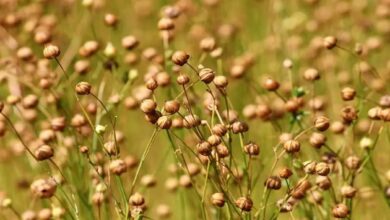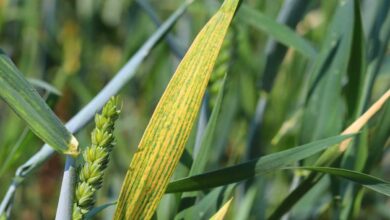Weed Management: Adopt these 4 measures to control weeds in wheat crop, know complete information
Weed Management: For farmers, weeds in wheat crops continue to be a major concern. In addition to depleting the crop’s nutrients, weeds can reduce yield. The most common weeds found in wheat crops are Satnashi, Krishna Neel, forest wheat, and parthenium. Various herbicides must be used at the appropriate period in order to control them. In today’s post, let’s learn more about herbicides and how they are used.

The applications of herbicides
1. 75% WG of sulfosulfuron
It gets rid of weeds like sawgrass, wild oats, and forest wheat.
Break down 500 milliliters of surfactant and six liters of water mixed with five grams of sulfosulfuron.
After 30 to 35 days after seeding, mix this solution with 120 to 200 liters of water and spray.
An alternative is to apply 160 grams of 15% WP Clodinafop Propargyl per acre.
2. 20% WP Metsulfuron Methyl
It gets rid of broad-leaved weeds like Krishna Neel, Teen Patti, Bathua, and Pyaazi.
Combine 8 grams of the medication with 200 milliliters of surfactant and 6 liters of water, then spray.
25–35 days after seeding, apply 120–200 liters of water per acre.
3. 75% sulfosulfuron methyl with 5% methyl metsulfuron WG
This blend works well for controlling broadleaf weeds and forest wheat.
Combine 500 milliliters of surfactant, 16 grams of the medication, and the recommended water, then spray.
4. Ethyl Ester 2-4 D 38% EC
It manages weeds with wide leaves.
30 to 35 days after seeding, spray an area with 5 liters of the medication diluted with water per acre.
Taking precautions while using pesticides
- In clear weather, always spray.
- For spraying, use a cut nozzle, flood jet nozzle, or flat fan nozzle.
- When spraying, no people or animals should be present in the field.
- Avoid spraying when the wind is strong or going the other way.
- To protect your eyes, mouth, hands, and nose, use a face mask, gloves, and boots.





